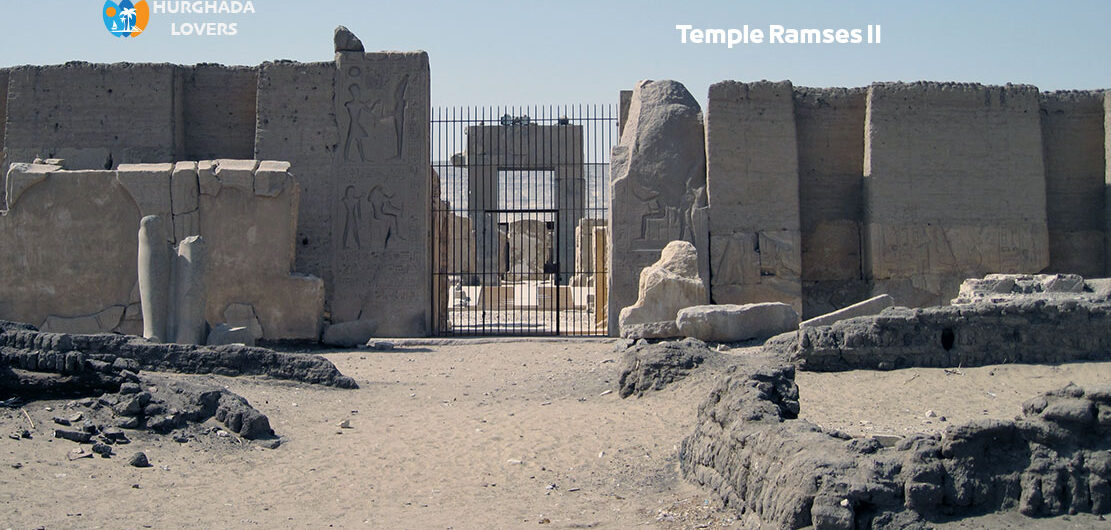Temple Ramses II in Abydos, Sohag, Egypt | Facts Pharaonic Temple King of Ramesses II, Map, History, When was temple built, What was the purpose and more..
The most important ancient funerary temples of the ancient Egyptian civilization in Sohag Egypt, the history and secrets of the construction of the Pharaonic temple and a complete description of the temple from the inside and the statues and drawings it contains.
Although this great temple has unfortunately been badly damaged, it deserves a special visit, in which case it is easily accessible from the road that enters the agriculture that comes from the statues of Memnon and the port of the west bank of the Nile, although those who have visited the monastery can easily visit this temple through the passage road of the plateau of Sheikh Abd El-Gurna.
The temple of Ramses is located north of the temple of his father Sethi I.
It is smaller than the first temple of Sethi, but it is considered one of the most important funerary temples. The temple was built at the beginning of the reign of Ramses II. Although many parts of it were destroyed, as well as the defect of the first building and the earlier courtyard, it is still characterized by its statues and columns.
Hurghada lovers Offer Luxury Hurghada to Luxor Tours | El Gouna to Luxor Tours | Makadi bay to Luxor Tours | Sahl Hasheesh to Luxor Tours | Soma bay to Luxor Tours.
Temple Ramses II
It is known to have the largest statue ever carved by artists in Egypt, but unfortunately it was broken by an earthquake in ancient times.
The entire temple is surrounded by a brick wall with an area, many of which occupy secondary buildings and warehouses.
The walls are built of limestone, sandstone columns, granite doorse red, black and gray, an alabaster chapel and temple inscriptions are very precise and discreet in bright colors.
One of the most famous features of the inscriptions on the walls of the temple is a scene from the Battle of Kadesh, which was shown by the Egyptians and recitals, in which Ramses II triumphed over them. On the north tower, when we look east, we find on the left a list of eighteen cities occupied by Ramses in the next one, and a scene of the prisoners as they are led to the gods and to the south the scenes of the campaign he launched against the Hittites.
The first courtyard is destroyed, with two rows of columns on the south side and seems to have been connected to the ruins of a palace to the south and enters this courtyard on the west side to find before us the remnants of the largest of Egyptian statues.
The second courtyard in which we now enter is preserved as the first, although it is also destroyed, on the north and south sides there were two rows of round columns, to the east a row of square columns with statues of Osiris on it, and to the west a balcony with a row of columns osirian Square overlooking the courtyard, and behind it a row of columns with crowns in the shape of papyrus buds. The statues of Osiris, of which only four remain in each row, represent Ramses II.
The remains of the temple indicate that its architectural design is no different from the design of the traditional Egyptian temple, which includes an open courtyard or two, then the balcony and finally the hypostyle room and Chapel, and the drawings of the appearances of worship and the God of the Nile and the cultivated land depicted by a woman were engraved on its walls.
The Ramesseum is the majestic funerary temple of Ramses II west of Thebes and is one of the most important funerary temples and it is one of the most famous monuments of Abydos.

